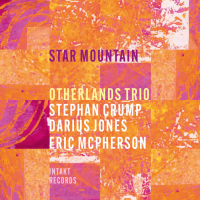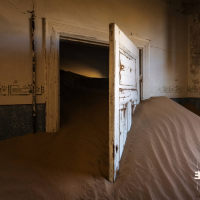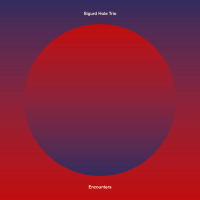Home » Jazz Articles » Album Review » Chuck Anderson: Spontaneity
Chuck Anderson: Spontaneity
What makes the album unique is that every track is completely improvised on the spot, hence the title Spontaneity. "Free jazz" musicians like Ornette Coleman (and many others) have made ensemble recordings that include free unplanned improvising, but rarely has there been a solo album that is totally improvised in one take. And this one is in what you might call the standard jazz idiom, not at all what goes by the name "free jazz." Anderson's much earlier album, Free Fall (Dreanbox Media, 2010), consisted of finely crafted original compositions, but this one was done totally in the moment in collaboration with recording engineer Doug Fearn. No overdubbing or editing was done. Anderson and his wife came up with the song titles upon listening to the tracks.
Such a recording is a huge risk and requires full concentration and great confidence. Anderson shows that he can maintain such a mind set throughout this album, in which the music fully reflects his guitar artistry and improvisational capacity and makes for enjoyable listening as well. Here's how it shaped up:
The first track,"Brazilios," emerges as a bossa nova reminiscent of "The Girl from Ipanema," close to a contrafact of it. Anderson's intro and conclusion nicely frame the tune. Throughout the album, his well-crafted introductions and endings are musical statements in themselves.
In the following track, "Gold Dust," Anderson takes more risks than in "Brazilios." It's a lightly swinging tune with interesting and complex improvisations. The improvising changes moods and colors, from dark to light, including some brilliant high speed muffled staccato runs, which are perhaps suggestive of the "gold dust."
"In a Dream" is a soft-spoken ballad reminiscent of some work by Jim Hall in his early days. This track would go along nicely with a relaxed weekend cappuccino or winding down at the end of the day. Anderson's beautiful tone and touch on the strings is evident. They possess the finesse of acoustic classical guitar artistry. It is possibly the best structured piece on the album, as if it is through composed.
"Blueprint" is a tune with a snappy rhythm and a country-blues flavor. Given that it is all made up on the spot, you've got to allow Anderson a track with one too many clichés, but in any case it is enjoyable to hear.
"Les Fleurs" is a lovely ballad that seems to tell a story. The melody is American heartland, but the variations and flourishes lend it flavor of a French folk song, and you might be reminded of Canteloube's Songs from the Auvergne.
"Street Beat" has a gritty blues feeling reminiscent of the saxophonist Willis "Gatortail" Jackson at the time that Pat Martino worked with him. Anderson provides his own "rhythm section" with a "bass guitar" quality. A great guitarist like him can create a "one man band" effect, such that his spontaneous composing can have several different lines going at the same time.
"Dancing on Air" is a waltz in which the melodic variations seem to float above the 3/4 rhythm. Anderson again draws upon folk themes for his material.
"Tritone Maze" plays around with augmented fourths but seems conservative compared let's say to John Coltrane's "Giant Steps." Nevertheless, it might be interesting for jazz guitarists to use as a learning tool for such intervals.
"Swingin'" has a Latin beat with an uplifting feel. It could provide an accompaniment for a vocalist. Somehow, you could almost hear Ella Fitzgerald scatting with this one.
The meaning of the title of the final track, "Pentangle," presents a conundrum to the listener. It's in 4/4 time, so why a title implying "five.?" Anderson does seem to play a five beat over the bar lines. And is he using pentatonc scales? What is clearly present is his playful and creative use of chords and rhythms. Further illustrating the spontaneity of the album is an extensive concluding section with a Spanish guitar theme and a flamenco-like rhythm.
Kudos to Anderson for putting himself on the line with an album created entirely on the spot. What came out is a beautiful recording that makes for both relaxed listening and serious consideration of its complex materials.
Track Listing
Brazilios; Gold Dust; In a Dream; Blueprint; Les Fleurs; Street Beat; Dancing on Air; Tritone Maze; Swingin'; Pentangle.
Personnel
Chuck Anderson
guitarAlbum information
Title: Spontaneity | Year Released: 2021 | Record Label: Self Produced
Tags
PREVIOUS / NEXT
Support All About Jazz
 All About Jazz has been a pillar of jazz since 1995, championing it as an art form and, more importantly, supporting the musicians who make it. Our enduring commitment has made "AAJ" one of the most culturally important websites of its kind, read by hundreds of thousands of fans, musicians and industry figures every month.
All About Jazz has been a pillar of jazz since 1995, championing it as an art form and, more importantly, supporting the musicians who make it. Our enduring commitment has made "AAJ" one of the most culturally important websites of its kind, read by hundreds of thousands of fans, musicians and industry figures every month.






















